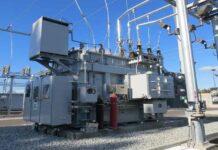Imagine a scenario where building a durable wall, retaining structure, or even a whole edifice didn’t require complex masonry work but was more like putting together giant LEGO blocks. This scenario is a current reality, thanks to interlocking concrete blocks. These cleverly designed blocks are quickly altering construction and landscaping projects. At the forefront is Betonblock, a pioneering solution bringing simplicity, efficiency, and ecological sustainability to construction sites across the globe.
Exploring interlocking concrete blocks
Interlocking concrete blocks have grown in popularity for their capability to connect without mortar. This characteristic not only expedites construction but also enables easy adjustment or relocation, making them ideal for temporary structures or projects needing future changes. Their versatility has led to applications ranging from earth-retaining walls to organized material storage bays.
The design of interlocking concrete block molds is a testament to engineering ingenuity. Each block is precision-molded with protrusions and indentations that allow them to fit together like puzzle pieces. This unique design eliminates the need for mortar, which is traditionally used to bind construction blocks. Instead, the blocks’ weight and the friction between them create a sturdy, stable structure. This mortar-free construction method not only saves time and resources but also allows for easy disassembly and reuse of the blocks, making them a versatile choice for a variety of projects.
The buzz around them
As ecological concerns increase, interlocking concrete blocks stand out. Made from concrete, they promise durability and a lighter ecological footprint, being recyclable and reusable across many projects. The construction community values them for their environmental benefits and installation convenience. Without the need for special tools or skills and thanks to their standardized sizes, these blocks simplify assembly, cutting down on time and labor expenses.
The construction industry’s embrace of interlocking concrete blocks is not just a trend but a reflection of a larger shift toward sustainable building practices. As companies and individuals alike seek to reduce their environmental impact, these blocks offer a compelling solution. They are made from readily available materials and can be produced locally, reducing transportation costs and carbon emissions. Furthermore, their durability and reusability mean that they can be used in multiple projects over their lifetime, reducing waste and conserving resources. This combination of environmental benefits and practical advantages has made interlocking concrete blocks an increasingly popular choice for builders and clients who prioritize sustainability.
Transforming construction bit by bit
Real-world applications of interlocking concrete blocks highlight their ability to revolutionize construction and landscaping. Examples include communities constructing flood barriers swiftly and entrepreneurs creating adaptable storage facilities. These instances not only exhibit the blocks’ utility but also their potential for sparking creativity. Looking ahead, their role in advancing sustainable, cost-effective, and flexible construction methods is not just hopeful but seems certain.
Interlocking concrete blocks have become a symbol of innovation in construction, making projects easier, greener, and more adaptable. As the construction sector moves forward, these blocks are poised to lead the way, proving that sometimes, the simplest solutions are the most transformative. So next time you see a new retaining wall or storage area, remember the humble concrete block – a pioneering force in construction’s future.




























